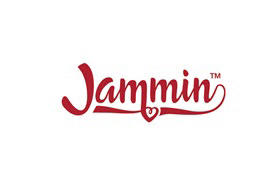UK IPO finds some cause for indirect confusion in Jammin CBD
Looking for a masterclass in the case law on confusion and evidence?

O/534/19, Jammin CBD (Opposition), UK IPO, 10th September 2019
Here the UK IPO offered a thorough overview of the authorities, explained notional use in detail, called out a contradictory argument, and delved into the nooks and crannies of the parties’ particular marketplaces.
In the UK IPO decision in O/534/19, the UK IPO has partially upheld an opposition on the basis of a likelihood of indirect confusion under s5(2)(b) of the Trade Marks Act 1994 (TMA) between two marks in class 34, both shown below.

Majid Khan (the Opponent) filed an opposition under ss5(2)(b) and 5(4)(a) TMA against all the goods applied for in a UK application for the JAMMIN CBD and device mark (the mark applied for), owned by Refill 2 Save Ltd (the Applicant). The opposition was based on the Opponent’s earlier UK trade mark (UKTM) registration for the mark Jammin (stylised) and heart device.
The mark applied for covered various goods in: class 29, including “edible oils and fats; jellies; compotes”; in class 30, including “aerated drinks; beverages based on tea; … snack bars …sweets [candy] … sweets (non-medicated -) containing herbal flavourings; …chocolate based products; … herb teas… herbal infusions”, and class 34 “electronic cigarette liquid [e-liquid] comprised of flavorings in liquid form used to refill electronic cigarette cartridges; electronic cigarette liquid … comprised of propylene glycol… vegetable glycerin; electronic cigarettes; electronic cigarettes for use as an alternative to traditional cigarettes”.

The Opponent’s earlier registration covered a broad range of goods in class 34 relating to e-cigarettes and encompassing: “cases for electronic cigarettes; electric cigarettes [electronic cigarettes]; electronic cigarette cleaners; electronic cigarette liquid [e-liquid] comprised of propylene glycol…vegetable glycerin; … electronic cigarettes for use as an alternative to traditional cigarettes; flavorings, other than essential oils, for use in electronic cigarettes”.
Importantly, the Opponent’s earlier registration had been registered for less than five years and was not therefore subject to proof of use in the proceedings.
The Opponent’s arguments
The Opponent argued that there was a likelihood of confusion under s5(2(b) TMA because the marks were similar and the goods were identical or similar, and also argued that the Applicant was passing off under s5(4)(a). The Opponent claimed the following in its statement of grounds and submissions:
- The dominant and distinctive element of the mark applied for is the element JAMMIN.
- The element CBD of the mark applied for was an industry abbreviation for cannabidiol (cannabis oil) and therefore descriptive and non-distinctive.
- The verbal component of the respective marks had a stronger impact on the consumer than the figurative component because the public would find it easier to refer to the verbal element rather than describing the figurative element.
- The device element contained in the mark applied for only reinforced the concept of JAMMIN, a slang term for “playing a musical instrument in particular a guitar” and associated, in the mind of the average consumer, with the singer Bob Marley. The hat depicted in the mark was a Jamaican-style hat associated with the Rastafarian movement.
- It had made extensive use of the sign JAMMIN throughout the UK since September 2017 in relation to “electronic cigarettes…cases… cleaners…liquid…flavorings” and “accessories” and had protectable goodwill.
- The Applicant’s goods in classes 29 and 30 were similar to its goods in class 34 because the Applicant’s e-liquid products could be available in a variety of different flavours including traditional desserts, similar to the Applicant’s goods in classes 29 and 30.
Applicant’s arguments
The Applicant denied all of the Opponent’s grounds and claims, and filed submissions arguing the following:
- The Opponent sold jam-flavoured e-liquids for e-cigarettes, whereas the applicant sold CBD, and hemp-based products incorporating CBD.
- The Applicant’s goods in classes 29 and 30 were not similar to the Opponent’s e-liquid products.
- The respective goods in class 34 were not similar because the Applicant’s products contained CBD. The goods would not be used by the same consumers and were not in competition.
- The Applicant’s goods were sold through health stores, pharmacies, vape shops, gyms, cafés, convenience stores and its online store. The only identical retail outlet was vape shops.
- JAMMIN was not the dominant and distinctive element of the mark applied for. The element CBD was equally as important as JAMMIN because CBD was an essential ingredient in all of the applicant’s goods.
- The element CBD was fundamental in ensuring that the Applicant’s consumers knew that its products contained only CBD and no “illegal cannabinoids”.
- The element CBD would not be “discarded by the public” as non-distinctive and was an essential identifier of the Applicant’s goods.
- The respective marks were conceptually dissimilar because the mark applied for conveyed the concept of relaxation, which was a fundamental element within the creation of the mark. It had: “overall flow to represent relaxation or being chilled”, also indicated by the addition of glasses to the skull along with the hemp leaves, and there were studies that “have found CBD to aid relaxation”.
The Applicant accepted that JAMMIN was a slang term with a variety of meanings, which included the Opponent’s reference to music and Bob Marley.
The Opponent’s evidence
The Opponent’s evidence was surprisingly brief, bearing in mind that one of the grounds of the opposition was s5(4)(a). It comprised of: a witness statement and exhibits from a representative that aimed to demonstrate the Opponent’s use of the earlier mark and that the relevant public associated it with the earlier mark; exhibits consisting of undated print-outs from three websites showing two of the Opponent’s products for sale and two Google searches for JAMMIN VAPE.
No sales figures or invoices were included.
The Applicant’s evidence
The Applicant’s evidence was considerably lengthier and comprised a witness statement from its representative and from the Applicant’s Managing Director. The nine exhibits included the following:
- Print-outs of Google searches for JAMMIN VAPE CO and JAMMIN CBD and website print-outs showing use of the Applicant’s mark and the Opponent’s earlier mark in relation to the respective e-liquid products. The Applicant argued that this proved that the businesses would not be confused, and that the Opponent used the mark JAMMIN VAPE CO and not JAMMIN alone;
- undated prints from the Applicant’s website purporting to show use of the mark applied for since 6th January 2018 in relation to goods described as CBD-based products;
- statements that its products were sold directly to consumers only via its online store or to selected retail partners with a strict compliance network, so that it would always be clear to the average consumer that that the contested goods come from the Applicant;
- online reviews of the Applicant’s products, arguing these demonstrated that consumers associated it with the mark applied for;
- an online dictionary definition of Jammin as meaning “Chillin out/hangin out”;
- reference to the mark POD SALT and a UK IPO opposition decision in which British American Tobacco Ltd failed to prevent registration of the mark on the basis of its earlier marks PODS in class 34. However, the Applicant failed to provide a reference to or copy of the decision;
- a print-out from the Applicant’s website showing goods sold and described as CBD oils and capsules, which the Applicant argued were classed as edible oils and fats in class 29, could not be vaped, and were dissimilar to the Opponent’s goods in class 34;
- evidence that the Opponent used the earlier registration in relation to “jam-flavoured” products.
Interestingly, the Opponent did not file evidence in reply, and neither party requested a hearing or filed written submissions in lieu of a hearing. The Hearing Officer (HO) therefore based the decision solely on the papers.
Detailed analysis
The HO provided a detailed analysis of the law governing ss5(2)(b) and 5(4)(a) TMA, and of the parties’ evidence and submissions. The HO also referred to cases concerning the complementarity of goods, namely, the CJEU decision in Kurt Hesse v OHIM (C-50/15 P) and the General Court decision in Boston Scientific Ltd v OHIM (T-325/06), and noted that s5(2)(b) required “at least some degree of similarity”.
With regard to the comparison of goods, the HO felt the need to make some preliminary points, as it appeared that there was a “misapprehension” of the legal test under s5(2)(b), and specifically the concept of notional use (ie that the HO had to consider all of the goods covered by the mark applied for and whether they were similar to the goods covered by the Opponent’s registration across the full breadth of the respective specification of goods).
The Opponent’s registration was not subject to proof of use, and therefore it did not matter whether in practice the parties operated in different areas of the vaping market.
With regard to the comparison of goods, it appeared that there was a “misapprehension” of the legal test under s5(2)(b)
As a result, the HO made short shrift of the Applicant’s arguments that the respective goods in class 34 were not similar. Clearly, there was no restriction of either specification, and therefore it did not matter whether the Applicant’s goods were CBD related, or the Opponent’s goods focused on “jam” flavoured e-liquids. The HO also pointed out to the Applicant that the CBD element in the mark applied for could not act as a specification limitation and was not relevant to the similarity of goods assessment under s5(2)(b).
On this basis, it is not a surprise that the HO found the respective class 34 goods to be identical. With regard to the Applicant’s goods in classes 29 and 30 and the Opponent’s class 34 goods, the HO rejected the Opponent’s argument that these were similar because e-liquid products could be available in a dessert flavour.
Closing the floodgates
Interestingly, the HO noted that while there was no evidence that the goods would be purchased by the same consumers in the same retail outlets, even had this been accepted it was important not to give it too much emphasis as this “would make similar goods of all kinds”. Clearly, the HO was not prepared to open up the floodgates by allowing similarity purely on the basis that the consumers were the same. The goods were therefore dissimilar.
The HO was not prepared to open up the floodgates by allowing similarity purely on the basis that the consumers were the same. The goods were therefore dissimilar.
With regard to the average consumer and the manner in which the goods would be selected, the HO confirmed that this was the general public over the age of 18, including smokers. The HO took the view that the average consumer would pay at least a medium level of attention when selecting the goods, as they were neither expensive nor cheap and consumers would want the correct strength and flavour.
Turning to the comparison of the marks, the HO noted that while it “would be wrong …artificially to dissect the marks” it was important to assess the relative weight of the components of the respective marks that were not negligible, because this contributed to the overall impression. The HO noted that while both marks contained two figurative elements the “dominant impact” of the Opponent’s mark was made by the word JAMMIN.
The HO quickly dismissed the Applicant’s argument that JAMMIN was not the dominant and distinctive element because CBD was fundamental in communicating the nature of the Applicant’s products. This argument could not stand as it suggested that: “a trade mark is a mere description, rather than a badge of origin”. The HO then dismissed the Applicant’s argument that CBD was distinctive, because the Applicant had essentially contradicted itself: on one hand saying that CBD was distinctive, and on the other that it was essential to identify a key ingredient. The evidence on file and the Applicant’s conflicting arguments were enough to satisfy the HO that CBD was non-distinctive.
The Applicant had essentially contradicted itself: on one hand saying that CBD was distinctive, and on the other that it was essential to identify a key ingredient.
Visually, the HO held that the respective marks were similar to a low to medium degree because they coincided in the verbal element JAMMIN, which was the most distinctive element of the Opponent’s registration and a dominant and distinctive element of the Applicant’s mark, but differed in the non-distinctive element CBD and the figurative elements.
Phonetically, the HO considered that the respective marks were similar to a high degree because they coincided in the identical word JAMMIN and CBD was non-distinctive.
Conceptually, the HO dismissed the Applicant’s arguments because again, evidence relating to how the Opponent used the mark in the marketplace was irrelevant. The HO considered that, in the context of e-cigarettes and e-liquid products, both marks had the potential to convey the concept of either music or relaxation.
Character question
With regard to distinctive character, the HO assessed that the Opponent’s registration had an average degree of inherent distinctive character because it was not descriptive or allusive of the Opponent’s goods. The HO also noted that had the Opponent claimed enhanced distinctive character, its evidence was “completely inadequate” to demonstrate this.
Had the Opponent claimed enhanced distinctive character, its evidence was “completely inadequate” to demonstrate this
In determining whether there was a likelihood of confusion, the HO noted that confusion can be direct or indirect and cited the summary by Appointed Person Mr Ian Purvis Q.C. in L.A. Sugar (BL-O/375/10).
In short: direct confusion occurs when the consumer mistakes one mark for another, and indirect confusion occurs when the consumer realises that the marks are not the same but believes that they belong to the same trade mark owner/undertaking.
Importantly, the HO also noted that a similarity between goods and services was essential for finding a likelihood of confusion. On this basis, the opposition under s5(2)(b) failed in respect of the Applicant’s class 29 and 30 goods but succeeded in relation to the identical class 34 goods, because, in the HO’s view, phonetic considerations could not be ignored in the consumer selection process.
The HO found that there was indirect confusion, as the shared verbal element JAMMIN played “an independent, distinctive and dominant role” and was the element the average consumer was likely to remember. The stylisation and figurative elements did not overcome this and the public would think both marks belonged to the same trade mark owner.
Useful summary
In considering the Opponent’s case under s5(4)(a) in relation to the remaining class 34 goods, the HO referred to the useful summary of the passing off requirements by HHJ Melissa Clarke in Discount Outlet v Feel Good UK ([2017] EWHC 1400 IPEC) and the relevant date for passing off in oppositions being the filing date, as noted in SWORDERS (O/212/06).
It was clear to the HO that the Opponent’s evidence was wholly inadequate to match its claims and establish a protectable goodwill. Specifically, it was limited to how it presented its goods to potential customers and contained no sales figures – which were essential in order for the HO to find there was a protectable goodwill.
Unusual effort
This decision is notable for the HO’s assessment of the case law and principles relating to a likelihood of confusion, notional use, the standard of evidence expected to demonstrate goodwill when claiming passing off under s5(4)(a) TMA, and the importance of not contradicting your own arguments in relation to non-distinctive elements.
The HO also made an unusual effort in communicating a clear understanding of the parties’ areas of trade and identifying and explaining why certain arguments that were put forward had no relevance to the legal principle of likelihood of confusion, particularly for registrations that are not subject to use requirements.
It is surprising that the Opponent did not file evidence in reply, since this may have been an opportunity to file further evidence to substantiate its claim of goodwill.
Key points
- Evidence relating to the actual use of a mark in practice, and/or operating in different areas of a market, is irrelevant where a registration is not subject to proof of use. The test is “notional” (ie the UK IPO will consider the full breadth of the specifications when assessing identity/similarity of goods/services).
- The average consumer and the manner in which the goods would be selected play an important part in the likelihood of confusion, as a dominant phonetic/verbal element can outweigh any differing visual/device elements and lead to a finding of indirect confusion.
- A descriptive element in a mark cannot act as a specification restriction.
- While there are no strict standards for evidence in oppositions under s5(4)(a), the UK IPO will want to at least see sales figures if an opponent is claiming a protectable goodwill.
- Opponents should use the evidence in reply stage, where possible, to complete inadequate evidence, and ensure that any claims are substantiated.
- Applicants and opponents should exercise caution in putting forward contradictory arguments regarding an element in a mark that may be considered non-distinctive.
Allister McManus is an Associate Trade Mark Attorney at Elkington + Fife


